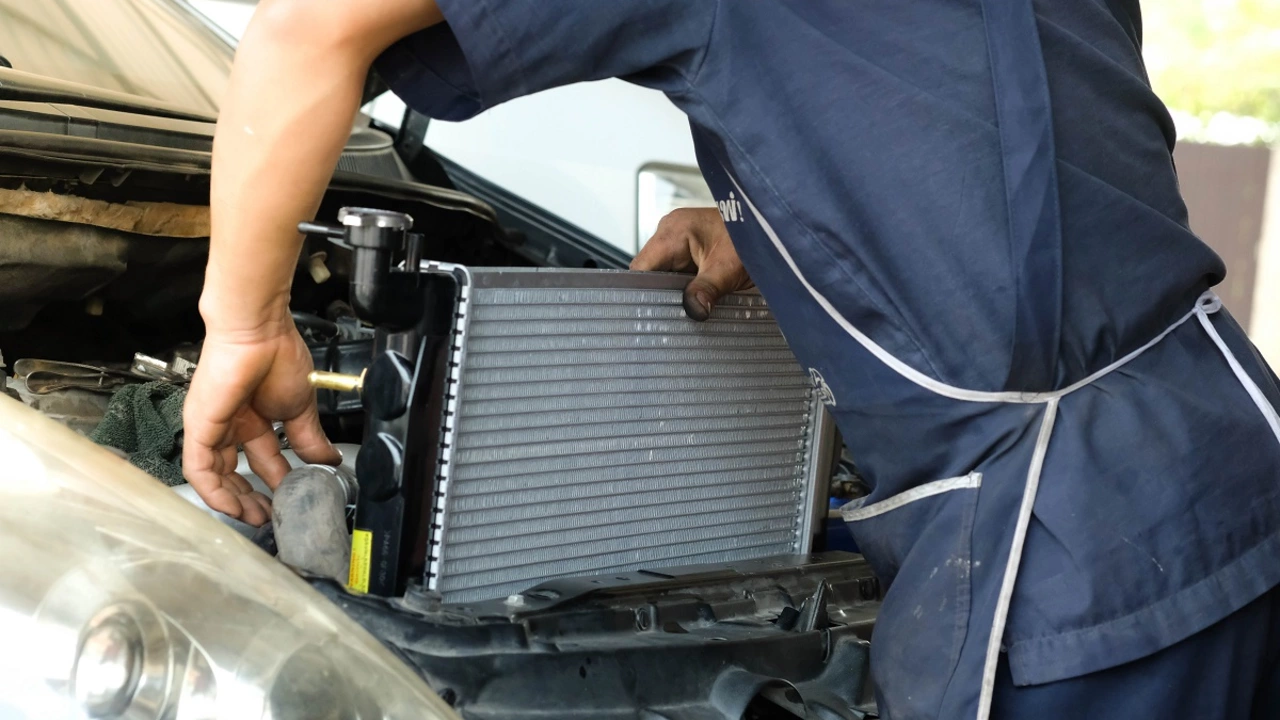Radiator Damage: What Causes It and How to Fix It
If your car’s temperature gauge spikes or you see steam, the radiator is probably the culprit. A damaged radiator can turn a smooth ride into a costly repair shop visit. Knowing the usual suspects helps you catch problems early and saves money.
Top Reasons Radiators Get Damaged
First off, corrosion is a big player. Old coolant mixes with metal and creates rust, which eats away at the radiator walls. Second, a busted hose or a loose clamp can let coolant spill out, leaving the radiator dry and prone to cracks. Third, road debris—like rocks or sharp gravel—can hit the radiator and cause a leak or puncture.
How to Spot Radiator Damage Early
Look for a few clear signs. Low coolant level under the hood usually means a leak somewhere. If you notice a sweet, oily smell, that’s coolant escaping. Overheating while driving, especially after a stop-and-go trip, signals the radiator isn’t doing its job. Finally, any visible puddles of bright green or orange fluid under your car point straight to a radiator issue.
Don’t ignore these clues. Driving with a damaged radiator can lead to engine overheating, warped heads, and a total engine failure. It’s better to pull over, let the engine cool, and check the radiator before you get stuck.
When you’ve identified a problem, the next step is a quick DIY check. Start by letting the engine cool completely—never open the radiator cap when it’s hot. Then, inspect the radiator fins for bent or clogged sections. Use a soft brush to clean any dust or bugs that might block airflow.
If you find a small leak, a radiator sealant can be a temporary fix. Pour the sealant into the coolant reservoir, run the engine until it reaches operating temperature, and let it circulate. The sealant will coat the leak from the inside and often stops it for a few weeks, giving you time to plan a proper repair.
For larger leaks or cracked tanks, you’ll need to replace the radiator. This isn’t as hard as it sounds. First, drain the coolant into a pan. Then, disconnect the upper and lower hoses, remove the mounting bolts, and take the old radiator out. Install the new unit, reconnect the hoses, refill with fresh coolant, and bleed any air out of the system.
Regular maintenance can keep radiator damage at bay. Change the coolant every two years or as the manufacturer recommends. Check the hose connections during oil changes, and keep the front of the car clean from bugs and road grime. A simple inspection every few thousand miles can catch corrosion before it spreads.
If you’re not comfortable working on the cooling system, a quick visit to a mechanic can save you headaches. Most shops can pressure‑test the radiator in minutes and tell you exactly where the leak is. That way, you avoid guesswork and get the right part the first time.
Bottom line: radiators are vital for keeping your engine cool, and most damage is preventable with a little attention. Watch the temperature gauge, check coolant levels, and clean the fins regularly. When you catch a problem early, fixing it is cheap and easy—nothing beats a reliable ride.

What are the implications of an object in a car radiator?
Having an object in your car radiator can lead to serious issues. It can obstruct the flow of coolant, causing your engine to overheat and potentially leading to costly repairs or even engine failure. Additionally, the object might damage the radiator itself, causing leaks. It's important to regularly check and maintain your car's radiator to prevent such problems. If you suspect something's amiss, get it checked by a professional immediately.
View more